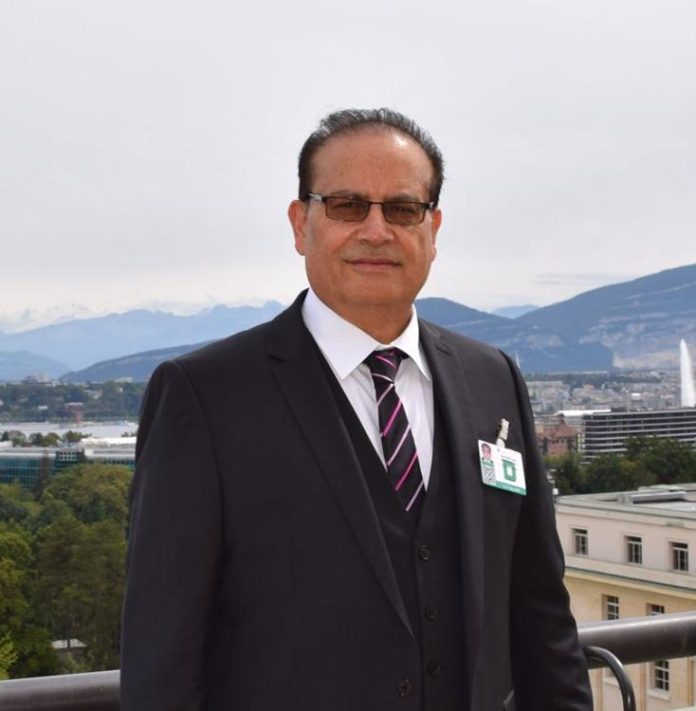By: Qamar Bashir
Macomb, Detroit, Michigan
When Israel was carrying out its military operations against Palestine, I initially believed that the scale and magnitude of Israel’s actions were disproportionate to Palestine alone and that Israel, along with its benefactor, had a larger strategic objective. This objective eventually came into focus: the weakening of Bashar al-Assad’s Shia regime in Syria. Interestingly, the U.S. played a crucial role. It first identified the main factors that kept Assad in power: Russia and Iran.
On one front, Russia became entangled in a prolonged war in Ukraine, where, with the support of the U.S. and Europe, Ukraine was able to limit Russia’s advances and push it back on multiple fronts. This prolonged war drained Russia of precious resources, and whatever resources it had were poured into its own conflict, leaving its allies, like Syria, high and dry.
At the same time, the U.S., with its ally Israel, sought to stretch Iran’s resources in the Middle East by involving it in a series of regional conflicts. Iran was forced to commit significant resources to supporting Hamas, Hezbollah, the Houthis in Yemen, and securing its own interests, which left its support for Syria’s Assad regime weakened.
This was a critical moment for the anti-Assad militias, supported by Saudi Arabia, the UAE, and other Sunni powers in the Middle East. These countries provided money and USA and its allies including Israel provided military aid, and superior guerrilla tactics and reconnaissance technologies, giving the militias an edge over the forces supporting Assad.
Without adequate funding, ammunition, and strategic guidance, Assad’s regime and its affiliated militias lost momentum, leading to a decisive advantage for the opposition groups backed by Sunni powers.
Donald J. Trump, the USA President Elect in his latest statement released on his personnel account on X, gleefully broke the news of Bashar al-Assad’s imminent fall. He announced that opposition fighters in Syria, in an unprecedented move, had taken control of numerous cities in a highly coordinated offensive and were now on the outskirts of Damascus, seemingly preparing for a major push to oust Assad. Trump pointed out that Russia, deeply involved in the ongoing war in Ukraine and having suffered significant losses, including over 600,000 soldiers, appeared incapable of halting this advance through Syria — a country Russia has long protected. He suggested that, just like Assad, Russia might be forced out, which he claimed could, in the end, be beneficial for them.
However, in his signature style, Trump reiterated his isolationist stance, saying, “THE UNITED STATES SHOULD HAVE NOTHING TO DO WITH IT. THIS IS NOT OUR FIGHT. LET IT PLAY OUT. DO NOT GET INVOLVED!” Despite his rhetoric, it was clear that the U.S. had been deeply involved in the Syrian conflict for years, both directly and through support of various opposition groups, and it continued to be a significant player in the region.
The situation in Afghanistan echoes the recent developments in Syria. After the U.S.-led invasion in late 2001, NATO and its allies successfully removed the Taliban from power, replacing them with Hamid Karzai’s government, followed by Ashraf Ghani in 2014. Despite massive investments of billions of dollars, the training of the Afghan National Army (ANA), and the continued presence of NATO forces, the Afghan government struggled with corruption, insurgency, and internal divisions. The Taliban gradually regained strength, and by 2021, after the U.S. signed the Doha Agreement to withdraw troops, the Afghan government quickly collapsed.
In August 2021, as the Taliban swept through the country, President Ghani fled, and the Afghan government crumbled. The chaotic and rapid departure of both Ghani and U.S. forces marked a humiliating defeat, as the coalition’s two-decade effort to stabilize Afghanistan ended in disaster. Despite the U.S. pouring resources into the country, the regime failed to survive without the backing of foreign forces, drawing comparisons to the weakening of Assad’s regime in Syria amidst shifting global dynamics.
The Syrian war, which began in 2011, is a complex and devastating conflict involving a mix of internal and external actors pursuing divergent goals. Bashar al-Assad’s government, supported by Russia, Iran, and Hezbollah, seeks to maintain power, while opposition forces range from moderate groups to extremists like Hayat Tahrir al-Sham, with backing from the U.S., Turkey, Saudi Arabia, and Qatar. Kurdish forces, crucial in the fight against ISIS, are allied with the U.S. but face Turkish opposition due to PKK ties. Regional players such as Iran and Russia aim to bolster Assad, while Turkey targets Kurdish ambitions, and Saudi Arabia and Qatar support Sunni rebels to counter Iran’s influence. ISIS, though territorially diminished, remains a disruptive force. Global actors like the U.S. and Russia pursue strategic interests, further entrenching the conflict. This multi-dimensional proxy war has devastated Syria, complicating efforts for peace and prolonging human suffering.
Now when Rebel forces have entered Damacus, have freed prisoners and have surrounded Asad’s resident, the future of Syria remain uncertain for decades of come. With Assad’s ouster and taking over Syria by U.S.-backed militia, Syria’s next decade would likely see a fragile transition marked by internal divisions, ongoing insurgencies, and regional power struggles. A transitional government, heavily influenced by U.S. and Gulf interests, would face legitimacy challenges, while rebuilding efforts focus on restoring infrastructure and reviving the economy. Kurdish demands for autonomy could heighten tensions with Turkey, and Iran might escalate proxy warfare to undermine the new regime. Though aligned with Sunni Arab states, Syria could remain a battleground for geopolitical rivalries, with external interference stalling democratic reforms. Persistent extremist threats, corruption, and sectarian divides would jeopardize stability, leaving the country vulnerable to cycles of unrest and underdevelopment.
First Iraq, then Libya, later Afghanistan, and now Syria—nations that were once navigating their own challenges like any other—have been plunged into chaos through entanglement in complex geopolitical rivalries. Once peaceful, these countries now lie in ruins, their physical infrastructure decimated, their economies shattered, and their social fabric torn apart. Children have been orphaned, women widowed, and countless lives lost, leaving behind rubble where thriving communities once stood. The staggering human cost is a sobering reminder of the price of becoming a pawn in the games of powerful nations. For fragile and impoverished countries, the lesson is clear: steer clear of the battles of giants, or risk being trampled like grass underfoot.
By: Qamar Bashir
Press Secretary to the President (Rtd)
Former Press Minister at Embassy of Pakistan to France
Former MD, SRBC
Macomb, Detroit, Michigan

















